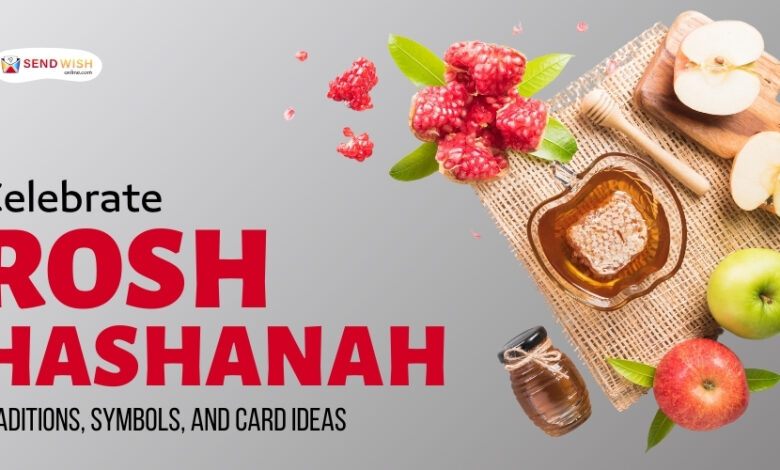Celebrate Rosh Hashanah: Traditions, Symbols, and Card Ideas

This marks one of the most essential celebrations marking the beginning of the High Holy Days in the Jewish calendar. It is the time when souls reflect on themselves and renew themselves in the Jewish calendar, which commemorates this special year on [fill date] eve. The festival is thoroughly traditional in its meanings, symbols, and rituals that build up familial and communal ties and create a relationship of belonging and hope for the rest of the year. Thus, in this paper, we go a bit deeper into the meaning of Rosh Hashanah, practices, symbols associated with the holiday, and the necessity of sending festive greeting cards, including group cards, to express feelings and wish others during this special time.
Importance of Rosh Hashanah
It is observed during the first two days of the Hebrew month called Tishrei, and the day represents reflection or self-reflection. In fact, supposed to be believed to be the day God created Adam and Eve and is said to mark the beginning of the world. It is definitely not just the celebration of a new year but reflects on past mistakes and seeks forgiveness.
Then comes repentance, so that the time could be qualified as repentance and renewal where hope overshadows newness.
Spiritual Preparation
Many Jewish people also perform a ritual called Selichot, which involves special penitential prayers observed before Rosh Hashanah. It is one month of Elul preceding Rosh Hashanah, a time of reflection and repentance. During this time, the shofar, or ram’s horn, is blown; this symbolizes the stirring of the spirit toward reflection.
Traditions of Rosh Hashanah
Tashlich
One of the specific traditions that take place during Rosh Hashanah includes Tashlich, which is an act of people casting their sins into a water body as they are in the symbolic act of looking forward to newness. This mainly occurs during the afternoon of the first day of Rosh Hashanah, and people cast pieces of bread or whatever they can from where they are into the water and in return, cast away their sins symbolically.
Celebratory Foods
Food is quite an important aspect of Rosh Hashanah celebration, as people also use symbolic food to send messages regarding the upcoming year. Families rush to get together to celebrate by feasting on a great deal of:
Challah: This is the round challah bread. It represents the circular cycle of the year and the continuation of life. Challah is usually dipped into honey, which signifies a sweet new year.
Apples and Honey: Eating apples dipped in honey is the most popular ritual depicting on the hope for a sweet year.
Pomegranates: This fruit depicts fertility and abundance, owing to the fact that it is commonly consumed because of its ‘abundance’ of seeds. As such, it represents wishing for a year full of ‘good deeds’.
Prayer Services
People commemorate Rosh Hashanah through special prayer services in synagogues. No description of Rosh Hashanah is complete without mentioning the shofar blasts, which serve as calls for repentance and introspection. The sound of the shofar awakens the soul, prompting listeners to reflect on themselves and their past.
Symbols for Rosh Hashanah
There are many symbols brought closer to one’s heart and are usually associated with Rosh Hashanah, carrying deep meanings, including:
The Shofar
As the paragraphs above show, the shofar stands as one of the most significant symbols of Rosh Hashanah. Its sound transforms from a call to worship to a reminder of a biblical commandment to blow the shofar during the new year. Indeed, the scariest sounds of the shofar evoke within the Jewish community the most poignant feelings: reflection on oneself and a personal vow to be better.
Honey
Honey is a symbol for sweetness and hope for the new year. People use it in various foods and rituals to remind celebrants to seek happiness in the coming year.
New Fruit
Because of the ceremony, it’s a new fruit on Rosh Hashanah-part of the traditions of new beginnings. Many families eat a pomegranate, or other fruits in season, and thank God for the richness of the earth.
The Tallit
A frayed tallit, or prayer shawl, is a testimony of faith and devotion. For, fringes, or tzitzit, remind one of responsibilities accompanying the call of religion.
Greeting Cards
When families and friends meet to revel and celebrate Rosh Hashanah, sending greeting cards remains a time-honored practice where people wish their loved ones dear heartfelt wishes and share the fun of the holiday. The different styles of greeting cards are available as well; there are traditional and modern types. And with that, greeting cards are also the perfect way to bond with a loved one in any corner of the world.
Personalized Greeting Cards
There is no such better approach as sending greeting cards with some personalized touches to wish Rosh Hashanah. A handwritten note or a meaningful quote from a person or personal reflections may add to the feeling like this:
“May this Rosh Hashanah bring you peace, joy, and the fulfillment of your dreams. Wishing you a sweet and fulfilling year ahead.”
“Shana Tova! May happiness, health, and prosperity fill your life. Shana Tova! As we usher in the new year
A group card is an excellent way in which communities, families, or friends can pool up their wishes and come together in their wishes. A card signed by everyone in the office or a family card featuring multiple signatures represents unity and shared joy. These cards can be quite meaningful since they are able to capture hopes and aspirations of the entire group.
Digital Greeting Cards
The e-cards have soared beyond traditional ones in the increasingly digitalized modern times. Just surf at SendWishOnline.com and make your own digital card and deliver the same to your dear ones with a rather easy click of a mouse. These virtual cards can have graphics, even audio animation playing, and the sender may add a message with words of love and care, even sympathy messages. In this case, this new version of something old makes it even more worthy.
Meaning of Wishes
The act of wishing people during Rosh Hashanah is a strong vow to the congregation and allows them to express love, gratefulness, and anticipation for one another. Major common wishes have been as follows:
“Shana Tova Umetuka!” A good sweet year!
“May you be written in the Book of Life.”
“Wishing you and your family a year filled with blessings and joy.”
Conclusion
Rosh Hashanah is one such time in the year, full of reflection, joy, and renewal. Such a tradition and symbols really establish meaning between families and within the communities. Giving greeting cards, including group cards, enables one to share the happiness of the holiday by extending wishes for peace, happiness, and hope. Shana Tova! As we begin the new year, let’s reflect on our past, embrace the present, and look forward to a sweet, fulfilling future.




